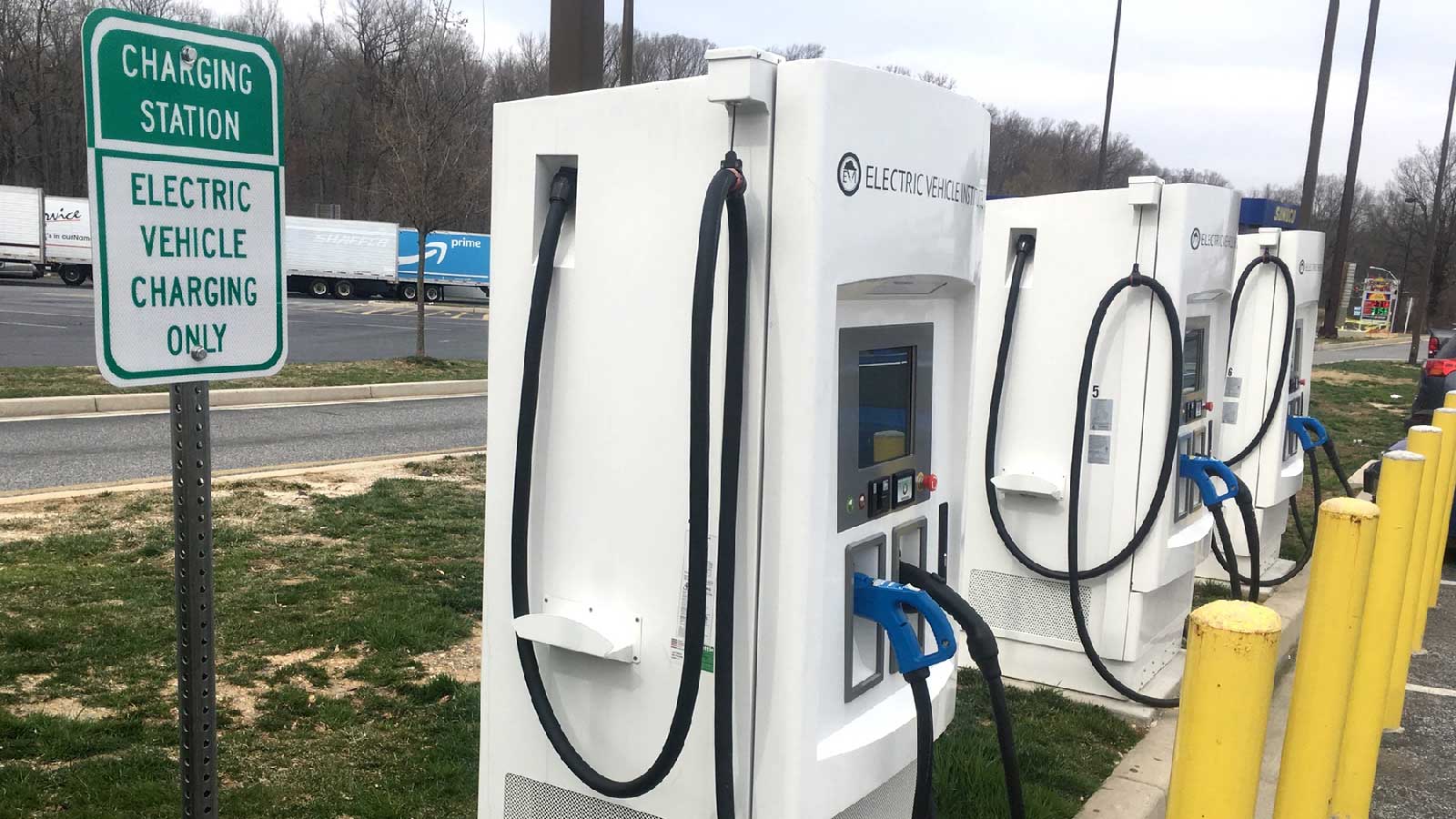In the latest sign that corporate behemoths are getting behind the shift to electric vehicles, Walmart announced on Thursday that it would install fast-charging stations at thousands of locations around the country. The rollout would quadruple the company’s network of charging stations, currently available at more than 280 Walmart and Sam’s Club stores.
Walmart’s move could help allay a common concern about buying an electric car — range anxiety, the fear of getting stranded with a dead battery and no chargers in sight. “We’ve got a Walmart store or Sam’s Club within 10 miles of 90 percent of the population in this country,” Vishal Kapadia, the company’s senior vice president of energy transformation, told the Washington Post. “We know we can address range anxiety in a way that no one else can.”
Seen as a pipe dream not long ago, the shift to electric vehicles is finally becoming a concrete reality. This year, the United States hit the milestone of 3 million electric vehicles on the road. That’s only about 1 percent of America’s vehicles, but sales are growing fast, with EVs making up 7 percent of new vehicle registrations in January, almost double the year before.
New laws and recent business pivots are nudging electric vehicles further into the mainstream. President Joe Biden plans to build a national network of 500,000 charging stations by 2030, with the government recently allocating $7.5 billion to that effort. California has banned the sale of gas-powered cars by 2035, with at least a half-dozen other states following along. On the business side, automakers are going all in on the trend — albeit in the American tradition of oversized trucks and SUVs. With Walmart adding chargers nationwide, the country’s largest retailer is now on board, too. After a century, the internal combustion engine’s century-long grip on the country is beginning to look shaky.
The adoption of electric vehicles has long been plagued by worries that they won’t be able to meet people’s everyday driving needs. A study last spring, for example, found that people underestimated how many daily tasks electric vehicles could fulfill by as much as 30 percent. Perhaps in response to those concerns, automakers have been churning out cars with longer ranges. Ram recently announced that its upcoming electric pickup, the Ram 1500 REV, will carry a battery option that can go 500 miles on a single charge — roughly enough for an eight-hour road trip.
The sticker shock of buying an electric car has also been a hindrance to sales. But Tesla, which controls about two-thirds of the EV market in the United States, slashed its prices in January, pressuring its rivals to follow suit. The Model Y, for example, went from $65,990 to $52,990, a 20 percent drop, and the company has said it will prioritize affordability in its next generation of vehicles. Mass-market electric vehicles could become as cheap as gasoline-powered cars this year, according to the New York Times. That’s partly thanks to subsidies and tax credits in the Inflation Reduction Act, the landmark climate legislation that Biden signed last year. For people buying new EVs, the IRA offers up to a $7,500 tax credit; this week, Ford announced that its whole lineup of EVs are eligible for either half or all of that credit.
One indicator that Americans are starting to get comfortable with electric cars is that they are becoming less polarizing. In the first decade of the 2000s, the hybrid Toyota Prius, became a cultural flashpoint, after it became associated with a moralizing brand of environmentalism. Fast-forward to last spring, and America’s long-time bestselling vehicle and a Republican favorite — the Ford F-150 pickup truck — went all electric, with a waitlist three years long at the time of its release. The IRA may also help change the political calculus by sending billions of dollars flowing into EV and battery factories in red states such as South Carolina, Tennessee, Texas, and Georgia.
To be sure, some Republicans are still dead-set against electric-powered cars. But up against Walmart, Ford, and billions in green investment, it’s hard to imagine that they could stop the growing momentum behind electric vehicles.
This story was originally published by Grist. Sign up for Grist’s weekly newsletter here. This story is part of Covering Climate Now, a global journalism collaboration strengthening coverage of the climate story.
Source link


